Researchers use Nuclear Magnetic Resonance (NMR) spectroscopy in a diverse range of scientific domains to explore the characteristics of organic molecules. The inherent magnetic characteristics of atomic nuclei can be targeted to uncover the structure, identity, concentration, and behavior of molecules in both solid and liquid samples.
NMR spectrometers are sensitive to disturbances in the environment, particularly building floor vibrations.
In the past, NMR spectrometers have been built into basements or installed on ground-level floors with firm foundations, which ensures appropriately low floor vibration levels.
However, in recent years, research facilities have increasingly been built on higher floors, especially in urban settings. These higher floors are accompanied by high-vibration environments, which result from both internal and external vibrations.
Sources of vibration inside buildings include HVAC, elevators, machinery, and human activity. External sources of vibration include street traffic, construction work, wind, subways, and light rails.
As research facilities are often leased or where funding is limited, making changes to reduce building floor vibrations is often not a possibility.
As a result of being built at higher levels where floor vibrations are elevated, highly sensitive tools like NMRs, are taking inaccurate readings. In the case of NMRs, this can mean false or artifact peaks in the NMR spectra readouts.
These peaks reduce the accuracy of analyses and lead to misinformation, ultimately reducing the tool’s sensitivity and consequentially, how useful spectra readouts are.
Working with TMC, leading NMR spectrometer Bruker tested two NMR magnets at a global petrochemical company. The experiment was conducted on the second floor of the company, testing the 500 MHz and 700 MHz Ascend NMR magnets they had purchased.
A floor vibration survey was carried out by TMC at both NMR floor locations. The spectrum displayed below demonstrates the floor vibration in Power Spectral Density from 0.5 Hz to 200 Hz using a Data Physics Quattro data acquisition card and Wilcoxon Research 731A accelerometers with external Amplifiers.
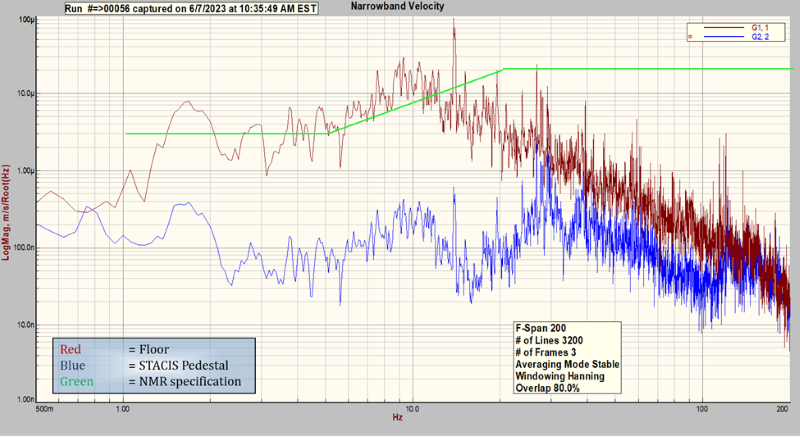
Image Credit: TMC
This data shows vertical floor vibration levels, vibration levels on a platform isolated by TMC’s STACIS 4® Piezoelectric Vibration Cancellation System with FloorSense™. The Bruker BioSpin floor vibration criteria for allowable vibration amplitudes for the 700 MHz magnet already fitted with sophisticated pneumatic passive isolators built into the magnet posts is seen in green in the spectrum above.
The floor vibration levels after vibration isolation exceeded the Bruker BioSpin criteria from 1 to 30 Hz.
A 20x attenuation as low as 1.6 Hz was achieved, reducing vibration levels back to specification standard and showing the ability of the STACIS 4® with FloorSense™ to significantly minimize floor vibration.
The 500 MHz and 700 MHz Ascend NMR magnets are fitted with TMC MaxDamp Pneumatic Isolators, installed within the magnet posts which support the cryostat, as seen in the photo below.
A significant reduction in vibration was achieved by combining an active STACIS® platform and passive pneumatic vibration isolation system, stacked in series. The two isolation systems are both compatible and complementary. The combined vibration isolation calculated is the sum of the attenuation of the two isolation systems.
A 2D COSY (correlated spectroscopy) experiment was also carried out on the same 700 MHz Bruker NMR , in the same vibrational environment while STACIS® and the MaxDamp® pneumatic isolations were turned on and off.
It is clear from the spectra readouts below that the mix of active STACIS® and passive pneumatic isolators enabled higher resolution than the NMR without vibration isolation support.
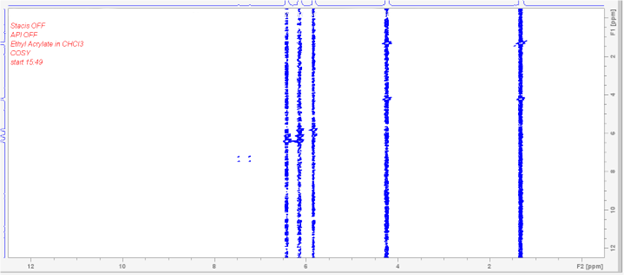
OFF. Image Credit: TMC
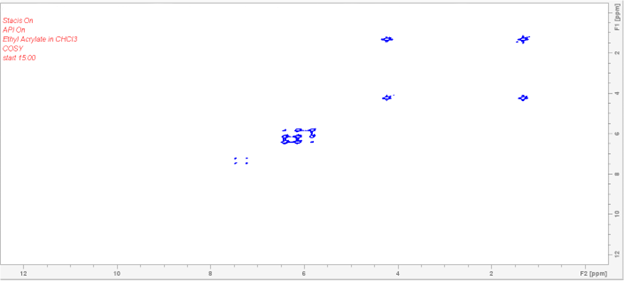
ON. Image Credit: TMC
The effect of the vibrations were clearly visible in the 700 MHz NMR 1-H spectrum.
In the CHCl3 spectrum below, the artifact peaks from the noise emerge in the red curve, yet is reduced with the Gimbal® pneumatic isolators switched on (blue curve), and is almost eradicated when STACIS is switched on (green curve).
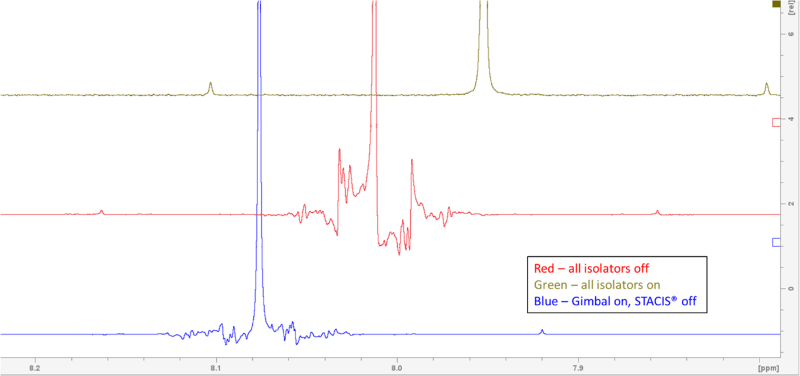
Image Credit: TMC
The results of the investigation show that when floor vibration in a building reduces how well highly sensitive scientific tools can perform, TMC active and/or pneumatic isolators can be used to return floor vibration levels to compliance levels.
Without the aid of STACIS®4 with FloorSense™ and MaxDamp® Piston pneumatic isolators the vibration settings assessed at the global petrochemical company would have inhibited research carried out using the Bruker BioSpin’s NMRs.
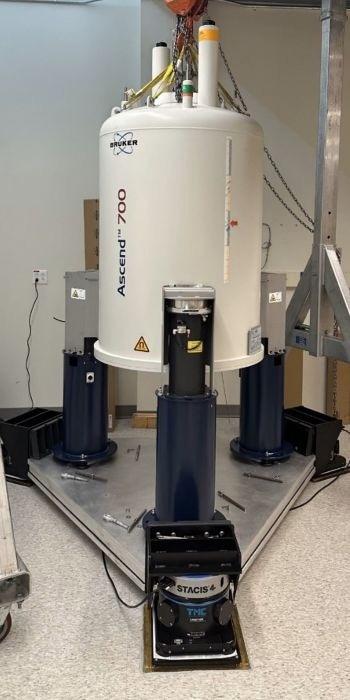
Image Credit: TMC
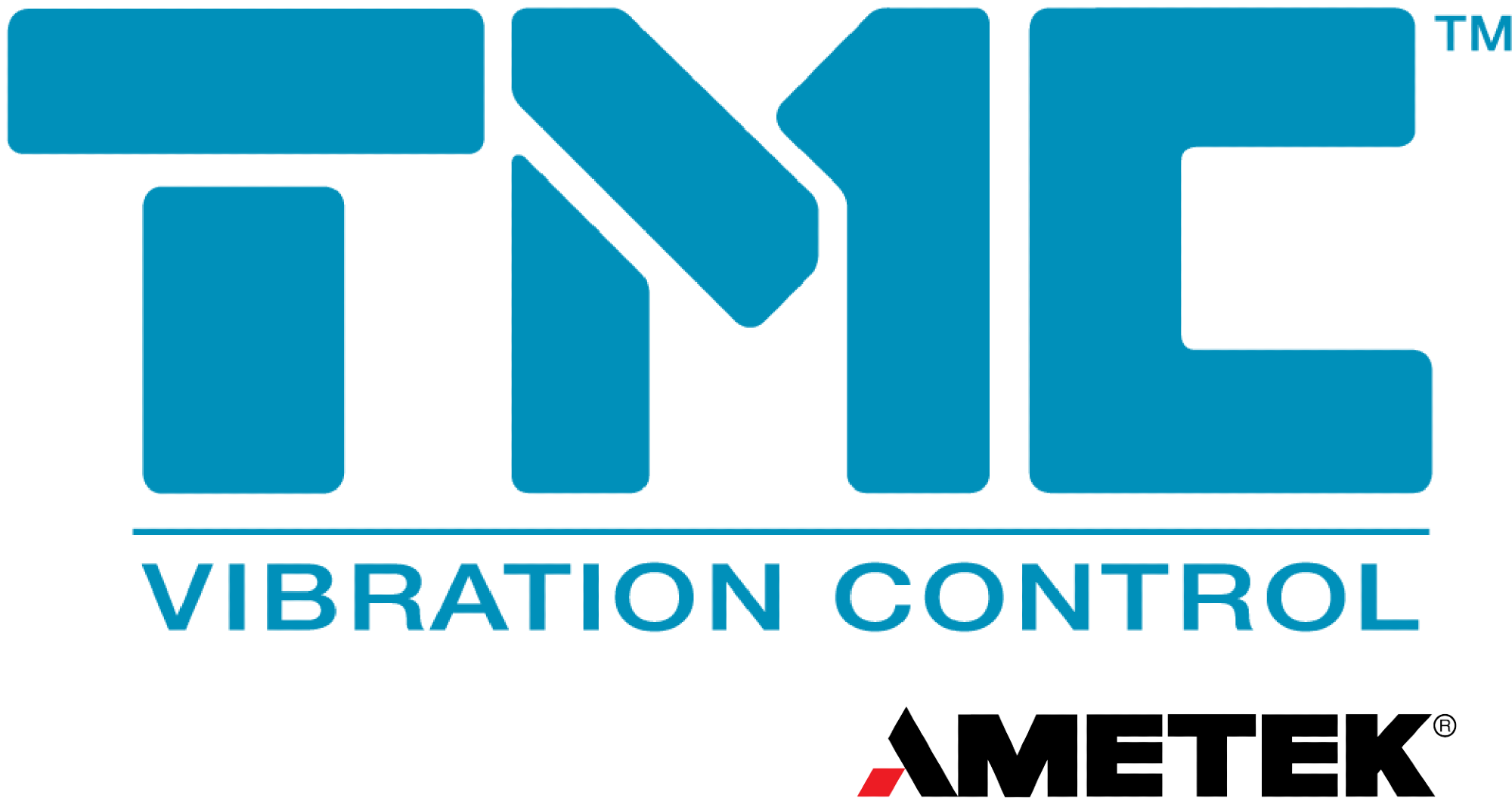
This information has been sourced, reviewed and adapted from materials provided by TMC.
For more information on this source, please visit TMC.